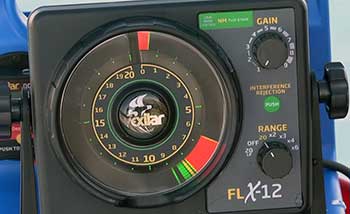I’ve spent countless hours casting lines, battling fish, and tinkering with gear, so when it comes to choosing between the Shimano Stradic and Vanford, I know it’s a tough call. Both reels are stellar, but they cater to different needs.
In this article, I’ll break down their key features, share my experiences, and weigh the pros and cons to help you decide which reel suits your fishing style.
Whether you’re chasing bass or braving saltwater, I’ve got you covered with a clear, engaging comparison.
A Brief Comparison Table
| Feature | Shimano Stradic FL/FM | Shimano Vanford |
| Body Material | HAGANE (Aluminum/Magnesium) | CI4+ (Carbon-Reinforced) |
| Rotor | Standard Metal Rotor | MagnumLite (MGL) Rotor |
| Weight (2500 Size) | 7.8 oz | 6.3 oz |
| Bearings | 6+1 | 7+1 |
| Max Drag (2500) | 7 lb | 7 lb |
| Line Capacity (Mono) | 6/200, 8/140, 10/120 | 6/230, 8/170, 10/140 |
| Line Capacity (Braid) | 10/150, 15/145, 30/100 | 10/200, 20/140, 40/105 |
| Water Resistance | X-Protect (Water-Resistant) | X-Protect (Water-Resistant) |
| Price Range | $194–$356 | $150–$250 |
| Best For | Durability, Heavy Loads | Finesse, Lightweight Casting |
My Journey With Shimano Reels
I remember my first Shimano reel—a Stradic FK I bought years ago. It was a tank, pulling in feisty smallmouth bass without a hitch. Since then, I’ve fished with both the Stradic FL/FM and the Vanford, and each has left an impression.
The Stradic feels like a reliable workhorse, while the Vanford’s featherlight design makes it a joy for finesse fishing. Let’s explore what makes these reels tick and how they stack up in real-world scenarios.
Shimano Stradic: The Durable Powerhouse
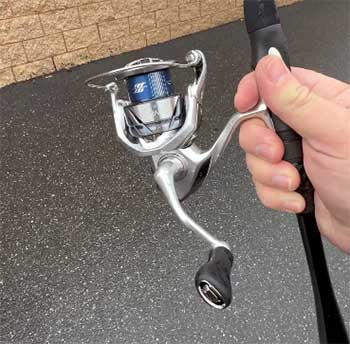
The Shimano Stradic, particularly the FL and newer FM models, is built for anglers who need a reel that can take a beating.
Its HAGANE body, a blend of aluminum and magnesium, gives it a rigid, no-flex frame.
I’ve dropped my Stradic FL on rocks while wading rivers, and it still performs like new.
This durability makes it a go-to for targeting larger species like steelhead or redfish.
Key Features of The Stradic
- HAGANE Body: The metal construction ensures strength and longevity, ideal for heavy-duty applications.
- MicroModule Gear II: This provides a silky-smooth retrieve, reducing gear noise and enhancing feel.
- InfinityXross (FM Model): The FM introduces this tech for better gear durability, especially under high loads.
- X-Protect: A water-repellent coating protects against corrosion, though it’s not fully waterproof.
- Long Stroke Spool: Improves casting distance, especially with light lures.
Pros of The Shimano Stradic
- Unmatched Durability: The HAGANE body can withstand rough conditions, from saltwater spray to accidental drops.
- Smooth Cranking: The MicroModule Gear II makes every turn feel effortless, even when fighting big fish.
- Versatility: With sizes from 1000 to 5000, it handles everything from trout to tarpon.
- Powerful Drag: The carbon drag washers in larger models (3000+) offer reliable stopping power.
- Aesthetic Appeal: Available in multiple colors, it pairs well with various rods for those who care about looks.
Cons of The Shimano Stradic
- Heavier Weight: At 7.8 oz for the 2500 size, it’s noticeably heavier than the Vanford, which can cause fatigue during long sessions.
- Felt Drag Washers in Smaller Sizes: Models under 3000 use felt washers, which are less durable than carbon.
- Higher Inertia: The standard rotor requires more effort to start and stop, less ideal for finesse fishing.
- Price: Starting at $194, it’s pricier than some competitors like the Daiwa Ballistic.
- Not Fully Waterproof: While X-Protect helps, submerging the reel can still cause issues.
I’ve used the Stradic FL for inshore saltwater fishing, targeting snook and redfish. Its robust build gave me confidence when a fish made a hard run, but I noticed the weight after hours of casting. For anglers prioritizing durability over finesse, the Stradic is tough to beat.
Shimano Vanford: The Finesse Champion
The Vanford, introduced in 2020 as the successor to the Stradic CI4+, is all about lightweight performance. Its CI4+ body—a carbon-reinforced graphite material—makes it incredibly light at 6.3 oz for the 2500 size.
I’ve fished the Vanford for bass and trout, and its responsiveness is unreal. Every twitch of the lure feels direct, like an extension of my hand.
Key Features of The Vanford
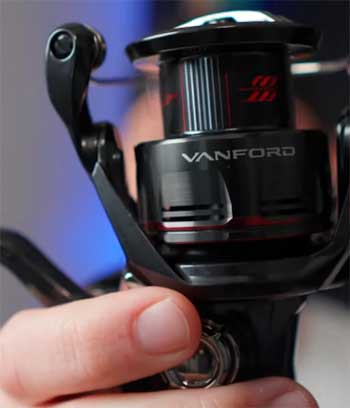
- CI4+ Body: Lightweight and corrosion-resistant, perfect for finesse applications.
- MagnumLite (MGL) Rotor: 48% lighter than standard rotors, reducing inertia for quick startups.
- Long Stroke Spool: Enhances casting distance and line management.
- Silent Drive: Minimizes play in internal parts, ensuring a refined feel.
- AR-C Spool: The angled lip reduces friction, improving casting performance with braided line.
Pros of The Shimano Vanford
- Featherlight Design: At 6.3 oz, it’s a dream for all-day casting without fatigue.
- Finesse-Friendly: The MGL rotor and low inertia make it ideal for delicate presentations.
- Smooth Operation: Silent Drive and extra bearing (7+1) create a buttery-smooth retrieve.
- Ambidextrous Handle: Works for both left- and right-handed anglers, unlike the Stradic’s left-hand bias.
- Affordable Price: Starting at $150, it’s a great value for its features.
Cons of The Shimano Vanford
- Less Durable: The CI4+ body, while rigid, isn’t as tough as the Stradic’s HAGANE body against impacts.
- Felt Drag Washers in Smaller Sizes: Like the Stradic, smaller models lack carbon washers, reducing drag durability.
- No Aero Wrap: Lacks the crisscross line-lay pattern, which may affect line management under heavy loads.
- Initial Quality Concerns: Early Vanford models had reports of squeaky bearings, though Shimano addressed this.
- Rod Balance Issues: Its light weight can feel off with heavier rods, requiring careful pairing.
Fishing a Vanford 2500 on a light rod for smallmouth bass was a revelation. The reel’s sensitivity let me feel every nibble, and casting light lures was a breeze. However, I wouldn’t trust it for heavy saltwater species—it’s just not built for that kind of abuse.
Head-to-Head Comparison of Shimano Stradic And Vanford Reels
Let’s break down the key differences and similarities to help you choose.
- Weight and Balance
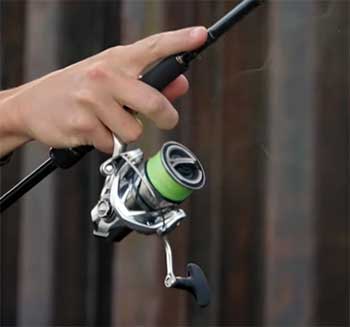
The Vanford’s 6.3 oz weight is a game-changer for finesse fishing.
I paired it with a 6’8” ultralight rod, and the combo felt like an extension of my arm.
The Stradic, at 7.8 oz, balances better with heavier rods, like my 7’ medium-power inshore setup.
If you’re casting all day, the Vanford’s lighter weight reduces fatigue, but the Stradic’s heft adds stability for bigger fish.
- Durability and Build
The Stradic’s HAGANE body is a tank. I’ve fished it in saltwater for years, and with proper rinsing, it shows no corrosion. The Vanford’s CI4+ body is corrosion-resistant but feels less robust. I’d hesitate to drop it on a rocky bank.
For rough conditions or larger species, the Stradic wins; for freshwater or light inshore, the Vanford holds its own.
- Smoothness and Performance
Both reels are smooth, thanks to MicroModule Gear II, but the Vanford’s extra bearing and Silent Drive give it a slight edge. Cranking the Vanford feels like slicing through butter, especially with light lures.
The Stradic’s InfinityXross (FM model) adds gear durability, making it better for high-torque situations, like pulling a fish from structure.
- Casting and Line Management
The Vanford’s AR-C spool and Long Stroke design make casting light lures a breeze, with fewer wind knots when using braid. The Stradic’s Long Stroke spool performs similarly, but its lack of an AR-C spool means slightly less line control.
I’ve cast both in windy conditions, and the Vanford edges out slightly for precision.
- Drag System
Both reels have a 7 lb max drag in the 2500 size, ideal for trout or bass. The Stradic’s carbon drag washers in larger sizes (3000+) are more durable, while both use felt washers in smaller sizes, which require more maintenance.
I’ve had no issues with either drag system, but the Stradic’s is better for bigger fish.
- Price and Value
The Vanford’s $150–$250 range is more budget-friendly than the Stradic’s $194–$356. For the price, the Vanford offers premium finesse features, while the Stradic justifies its cost with durability.
If you’re on a budget, the Vanford gives you more bang for your buck.
- Aesthetics and Ergonomics
The Stradic’s sleek, multi-color options make it a head-turner. The Vanford’s black-and-red scheme is striking but less versatile.
Ergonomically, the Vanford’s T-bone handle offers better control, while the Stradic’s standard handle feels sturdier. It’s a matter of personal taste, but I lean toward the Vanford’s look.
Real-World Applications of Shimano Stradic And Vanford Reels
- Freshwater Fishing
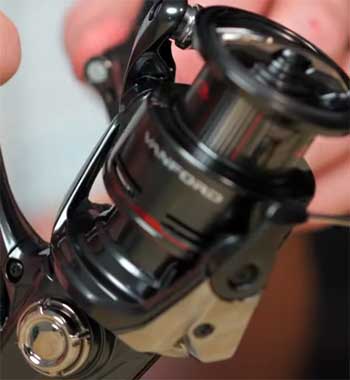
For bass, trout, or walleye, the Vanford shines.
Its light weight and sensitivity make it perfect for finesse techniques like drop-shotting or wacky rigging.
I’ve landed 3-pound largemouths with ease, feeling every head shake.
The Stradic is better for heavier freshwater species, like pike or musky, where its robust build handles aggressive fights.
- Saltwater Fishing
Inshore saltwater is where the Stradic excels. I’ve used it for redfish and snook, and its HAGANE body resists corrosion with proper care.
The Vanford is suitable for light inshore work, like speckled trout, but its CI4+ body isn’t as durable in harsh saltwater conditions. Neither is fully waterproof, so rinse them after every trip.
- Finesse vs. Power
If you’re finesse fishing—think ultralight lures or delicate presentations—the Vanford is your reel. Its low inertia and light rotor make every cast feel effortless.
For power fishing, like targeting stripers or salmon, the Stradic’s cranking power and durability are unmatched.
My Personal Take
After fishing both reels extensively, I lean toward the Vanford for its lightweight finesse. Pairing it with a light rod for bass fishing feels like cheating—it’s that good. But when I’m chasing bigger fish or fishing in rough conditions, the Stradic’s reliability is hard to beat.
Your choice depends on your fishing style: prioritize finesse and weight savings with the Vanford, or go for durability and power with the Stradic.
Tips For Choosing Your Reel
- Test the Balance: Take your rod to a tackle shop and test how each reel feels. The Vanford’s light weight can feel off with heavier rods.
- Consider Your Species: Targeting small fish? Go Vanford. Bigger, hard-fighting fish? Stradic.
- Maintenance Matters: Both reels need rinsing after saltwater use. Felt drag washers in smaller sizes require regular greasing.
- Budget Check: If $200+ is a stretch, the Vanford offers more features for less.
- Try Before You Buy: If possible, handle both reels to feel the rotor and cranking difference.
Frequently Asked Questions (FAQ)
The Shimano Vanford replaced the Stradic CI4+, while the Stradic FL and FM continue the Stradic line with updated features.
The Sustain offers a metal body, MGL rotor, and titanium-coated spool lip, making it more durable for bigger fish. For finesse, the Vanford’s lighter weight is better.
The Stradic FM is the latest and best, with InfinityXross for enhanced gear durability, though the FL is still excellent for most applications.
Yes, the Vanford is good for light inshore saltwater fishing, thanks to its CI4+ body and X-Protect, but it’s less durable than the Stradic for heavy saltwater use.
Wrapping Up
Choosing between the Shimano Stradic and Vanford boils down to your fishing needs. If you crave a lightweight, finesse-friendly reel, the Vanford will elevate your game with its silky-smooth performance.
If durability and power are your priorities, the Stradic’s robust build won’t let you down. I’ve shared my experiences to help you make an informed choice, so grab the reel that matches your style and hit the water with confidence.
You can’t go wrong with either—just pick the one that feels right for you.
